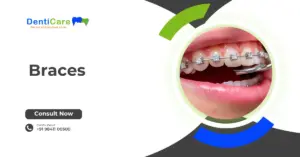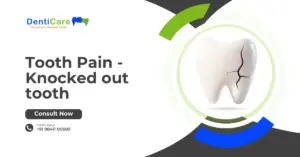Ortho treatment is done to close the gap in between the teeth. It can be done for any age group, children and for adults. However it is better to be done in the growing age, as it greatly benefit jaw growth.
Who needs ortho treatment ?
- Teeth did not grow properly
- Missing teeth or small teeth
- Losing baby teeth early which causes misalignment in permanent teeth
- Large jaw with small teeth and small jaw with large teeth
- Large tongue causes flaring of teeth
- Bad oral habits like thumb sucking, tongue thrusting
What is orthodontic treatment ?
Orthodontic treatment can be preventive, intervention or correction of misaligned teeth. They can treat several dental problems such as gaps, crowding, misaligned teeth, and more. There are different types of orthodontic treatment. It can be fixed, removable or surgical done to correct the teeth and jaw.
Braces mostly are made of metal, ceramic or clear braces. These are the types of fixed brackets. Removable orthodontics are appliances which requires a lot of patient compliance. Clear aligners and retainers are such examples of removable treatment.
What is the procedure for braces?
1. Initial Consultation
The orthodontist examines your teeth, takes X-rays, and discusses your treatment options.
A treatment plan is customized based on your dental condition.
2. Records and Planning
Impressions or digital scans of your teeth are taken to design your braces.
Photographs may also be taken to track your progress.
3. Braces Placement
Teeth are cleaned and dried.
Brackets are bonded to each tooth using dental adhesive.
Archwires are placed through the brackets and secured with tiny elastic bands.
4. Regular Adjustments
You’ll visit the clinic every 4–6 weeks.
The orthodontist will adjust the wires to gradually move your teeth into the right position.
5. Oral Care During Treatment
Brush and floss regularly to keep your teeth and gums healthy.
Avoid sticky and hard foods that may damage your braces.
6. Removal of Braces
Once alignment is complete, the braces are gently removed.
Teeth are polished to remove adhesive.
7. Retention Phase
A retainer is provided to maintain the new position of your teeth and prevent shifting.
Maintenance of Braces
- Proper oral hygiene is absolutely must
- Brush and floss in between the braces
- Avoid eating chewy or sticky foods
- Do not bite hard objects like pen, bottlecaps, nails etc.
- Cut up your food into smaller pieces and eat
How long will it take to close the teeth gap?
It depends on several factors like the size of the gap, the diagnosis, the cause of the gap and most important patient compliance and maintenance. A small gap in between can be closed with braces approximately around 6 to 8 months, but for complex cases the duration can exceed up to 12 months to 2 years. Patient compliance to visit the dentist for review and braces tightening is most crucial.
What happens after the gaps get closed?
After the gaps are closed and all the teeth are in proper position, the brackets are removed. After the removal of the brackets, leftover material is removed. Scaling and polishing is done to smoothen your teeth. Post treatment images and intraoral scan is taken.
After completion of your orthodontic treatment, it is mandatory to wear a retainer. It is of the utmost importance to make sure the teeth does not misalign and go back to its previous position. The retainer can be fixed or removable.
At Denticare Chennai, Best tooth alignment treatment services are available. We do imported braces systems like Damon braces USA , 3M Unitek and many others. We are also best Invisalign aligner provider in Chennai. Any questions please do not hesitate to call us.





